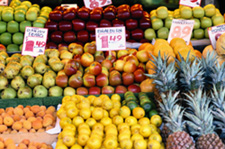 
Chemistry: Matter and ChangeChapter 25:
Nuclear ChemistryProblem of the Week <a onClick="window.open('/olcweb/cgi/pluginpop.cgi?it=gif::::/sites/dl/free/0078664187/179001/ch25_chapter.gif','popWin', 'width=NaN,height=NaN,resizable,scrollbars');" href="#"><img valign="absmiddle" height="16" width="16" border="0" src="/olcweb/styles/shared/linkicons/image.gif"> (0.0K)</a> <a onClick="window.open('/olcweb/cgi/pluginpop.cgi?it=gif::::/sites/dl/free/0078664187/179001/ch25_chapter.gif','popWin', 'width=NaN,height=NaN,resizable,scrollbars');" href="#"><img valign="absmiddle" height="16" width="16" border="0" src="/olcweb/styles/shared/linkicons/image.gif"> (0.0K)</a> |  <a onClick="window.open('/olcweb/cgi/pluginpop.cgi?it=jpg::::/sites/dl/free/0078664187/179001/ch25_1.jpg','popWin', 'width=NaN,height=NaN,resizable,scrollbars');" href="#"><img valign="absmiddle" height="16" width="16" border="0" src="/olcweb/styles/shared/linkicons/image.gif"> (42.0K)</a> <a onClick="window.open('/olcweb/cgi/pluginpop.cgi?it=jpg::::/sites/dl/free/0078664187/179001/ch25_1.jpg','popWin', 'width=NaN,height=NaN,resizable,scrollbars');" href="#"><img valign="absmiddle" height="16" width="16" border="0" src="/olcweb/styles/shared/linkicons/image.gif"> (42.0K)</a> | Spoiled
Rotten
In today's hungry world it becomes very important to preserve food. Up to 25 percent of harvested food is lost each year due to spoilage of food from microorganisms and insects. To reduce spoilage, the shelf life of foods must be increased. Radioisotopes and radiation used in food and agriculture are helping to achieve an increased shelf life for fresh produce as well as control of pathogenic organisms in poultry and red meat. Many fresh foods provide favorable environments for bacterial growth and the processing of these foods does not supply a step used to kill microorganisms, such as cooking or pasteurization. The use of food irradiation provides a way to kill the microorganisms in the food without cooking it. Around the world, over 40 countries use food irradiation to preserve grains, spices, fruits and vegetables, and meat. | | Two things are needed for the food irradiation process. First, a source of radiant energy must be supplied, which includes radioisotopes and machines that produce high-energy beams. Second, specially constructed containers must be provided to confine this energy and protect the personnel from exposure. It is important to understand that food does not become radioactive. When food is irradiated it is exposed to gamma rays for a short period of time and is never in direct contact with the radioisotope. It is also important to note that the energy source is not of sufficient strength to change the atoms of the food and the nutritional losses that occur are less than those that are observed with cooking and freezing. Irradiation simply destroys insects, fungi or bacteria that cause human disease or cause food to spoil and makes is possible to keep food longer and in better condition. Since 1986, irradiated food products have been sold through the United States. Because irradiated food cannot be recognized by their smell, taste, texture, or appearance; all irradiated food must be labeled with a logo along with the words "Treated by Radiation". | | The radioisotope Cobalt-60 is used to irradiate food. This radioactive isotope is produced by bombarding ordinary cobalt, Cobalt-59, with neutrons in a nuclear reactor. This is done with a large tank of water, in which the neutron source californium is immersed, and the water acts as a moderator to slow down the neutrons. Cobalt-59 sits in the water tank next to the californium and captures the slowed neutrons producing Cobalt-60. Cobalt-60 decays by beta and gamma emissions and has a half-life of 5.27 years. |  <a onClick="window.open('/olcweb/cgi/pluginpop.cgi?it=gif::::/sites/dl/free/0078664187/179001/POWproblem_1.gif','popWin', 'width=NaN,height=NaN,resizable,scrollbars');" href="#"><img valign="absmiddle" height="16" width="16" border="0" src="/olcweb/styles/shared/linkicons/image.gif"> (0.0K)</a> <a onClick="window.open('/olcweb/cgi/pluginpop.cgi?it=gif::::/sites/dl/free/0078664187/179001/POWproblem_1.gif','popWin', 'width=NaN,height=NaN,resizable,scrollbars');" href="#"><img valign="absmiddle" height="16" width="16" border="0" src="/olcweb/styles/shared/linkicons/image.gif"> (0.0K)</a> | Write the nuclear equation for the production of cobalt-60. | | |  <a onClick="window.open('/olcweb/cgi/pluginpop.cgi?it=gif::::/sites/dl/free/0078664187/179001/POWproblem_2.gif','popWin', 'width=NaN,height=NaN,resizable,scrollbars');" href="#"><img valign="absmiddle" height="16" width="16" border="0" src="/olcweb/styles/shared/linkicons/image.gif"> (0.0K)</a> <a onClick="window.open('/olcweb/cgi/pluginpop.cgi?it=gif::::/sites/dl/free/0078664187/179001/POWproblem_2.gif','popWin', 'width=NaN,height=NaN,resizable,scrollbars');" href="#"><img valign="absmiddle" height="16" width="16" border="0" src="/olcweb/styles/shared/linkicons/image.gif"> (0.0K)</a> | Write the nuclear equation for the decay of cobalt-60. | | | | |  <a onClick="window.open('/olcweb/cgi/pluginpop.cgi?it=gif::::/sites/dl/free/0078664187/179001/POWproblem_3.gif','popWin', 'width=NaN,height=NaN,resizable,scrollbars');" href="#"><img valign="absmiddle" height="16" width="16" border="0" src="/olcweb/styles/shared/linkicons/image.gif"> (0.0K)</a> <a onClick="window.open('/olcweb/cgi/pluginpop.cgi?it=gif::::/sites/dl/free/0078664187/179001/POWproblem_3.gif','popWin', 'width=NaN,height=NaN,resizable,scrollbars');" href="#"><img valign="absmiddle" height="16" width="16" border="0" src="/olcweb/styles/shared/linkicons/image.gif"> (0.0K)</a> | Determine the amount of cobalt 60 that will remain after 26.4 years when a 100.0 g sample is used for food irradiation. |  <a onClick="window.open('/olcweb/cgi/pluginpop.cgi?it=gif::::/sites/dl/free/0078664187/179001/webLinks.gif','popWin', 'width=NaN,height=NaN,resizable,scrollbars');" href="#"><img valign="absmiddle" height="16" width="16" border="0" src="/olcweb/styles/shared/linkicons/image.gif"> (1.0K)</a> <a onClick="window.open('/olcweb/cgi/pluginpop.cgi?it=gif::::/sites/dl/free/0078664187/179001/webLinks.gif','popWin', 'width=NaN,height=NaN,resizable,scrollbars');" href="#"><img valign="absmiddle" height="16" width="16" border="0" src="/olcweb/styles/shared/linkicons/image.gif"> (1.0K)</a> | Useful Web Sites:
Radioisotopes
Production of Cobalt-60
Cobalt-60
The Peaceful Atom
Ten Most Commonly Asked Questions about Food Irradiation
Answers to Your Questions About Food Irradiation
Radioisotopes in Industry
Ten Most Commonly Asked Questions About Food Irradiation | |
 |  |
|





